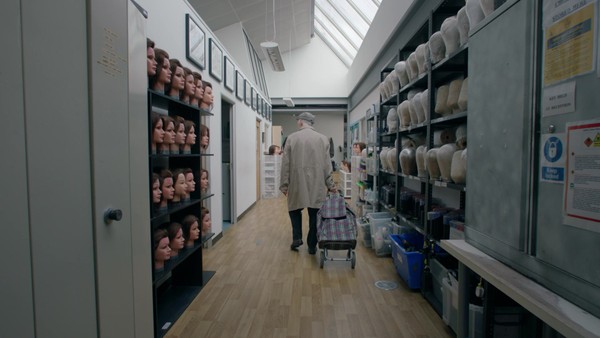Pharma > A: Communications to Healthcare Professionals
ZELBORAF CAMPAIGN
VCCP HEALTH, London / ROCHE / 2014
Overview
Credits
OVERVIEW
BriefExplanation
BriefWithProjectedOutcomes
International campaigns are always adapted locally and follow local guidelines. As a rule, all these materials are ABPI compliant or similar. The materials are only for healthcare professionals and not for public viewing.
CampaignDescription
Zelboraf is a treatment for skin cancer that has now spread to other parts of the body. For decades, patients with this condition have received a standard chemotherapy, which only has a 15% response rate. There is no way of knowing in advance of treatment who will be fortunate enough to respond – so everyone has to be treated in the same way. Zelboraf is different, it is the first skin cancer treatment to come with its own diagnostic tool, which is used before treatment to see who should or shouldn’t respond. In those patients positively identified with this tool there is an 85% chance of success. So with Zelboraf, patients can now be treated as individuals.
In the campaign, the mannequins represent the old, blanket approach to treatment and the single patient represents the new individual patient.
This international campaign ran all around the world, except the US and included a number of ad executions, above and below-the-line printed and digital materials, plus a patient support programme and app.
ClientBriefOrObjective
The need to establish diagnostic testing as routine for new skin cancer patients
To establish Zelboraf as the industry standard before more effective competition arrived
Execution
The launch campaign was used across all promotional materials (including print detail aid, electronic iPad detail aid, global website and post-launch congress activity) to create a coherent, consistent and recognisable brand.
Further materials were developed to facilitate smooth roll-out in individual countries, like a brand book, implementation guide and image library.
A global advertising schedule, targeting our key audience of specialists, ran for 6 months following launch in print and electronic media. The campaign ran for two years globally, excluding the US.
Outcome
Qualitative research with physicians showed attitudes had acutely changed.
Physicians who considered skin cancer therapy frustrating and stagnant, now felt hugely motivated. They described Zelboraf as cutting edge and unique.
By the end of 2012, in countries where Zelboraf had launched, diagnostic-testing rates exceeded 80%. This was well beyond the 2012 testing target of 60% and it continues to rise – hitting 90% by early 2013.
By the end of 2012 Zelboraf had secured an 84% global market share, surpassing the 60% target.
Total 2012 sales were 124% vs the target set by Roche.
Strategy
Prior to Zelboraf, all patients had to be viewed in the same way. There was only one treatment type, chemotherapy, and there was no way of knowing if it was likely to work or not.
Zelboraf meant that each patient could now be viewed as an individual, if they responded positively to the diagnostic test, it was highly likely Zelboraf treatment would be successful.
The strategic proposition was,
“The Power of Personalization”
In the execution, the mannequins represent the old way of treating skin cancer, and the patient represented the new, individual way.
Synopsis
While chemotherapy has made many great advances in recent years, in skin cancer progress has really lagged behind. That means that all patients had to be treated in the same way, receiving standard chemotherapy. Unfortunately, this chemotherapy was very harsh, and doctors had no way of knowing if patients would actually respond to it, or not. The success rate was only about 15%.
Zelboraf works in combination with a diagnostic tool (to see which individuals should respond to it) and this would be a novel way of approaching treatment for these doctors – possibly slowing down uptake of the brand.
After years of waiting for an advance in skin cancer, two new therapies would be launching in close succession. Zelboraf would be first, but not the most effective, and it would have to establish itself very fast to fend off the competition.
By launching a drug that worked in combination with a diagnostic tool, Roche offered physicians, for the first time, the means to accurately identify specific patients who should respond to treatment and then effectively treat their disease. Zelboraf represented a great step forward for doctors after years of disappointment. In patients who were identified as suitable for Zelboraf, there was an 80% chance of success, compared with just 15% for chemotherapy.
More Entries from Pharma, Vaccines & Biotech in Pharma
24 items
More Entries from VCCP HEALTH
24 items








